In 3D and above, a dihedral angle is the angle between two planes. For instance, any 2 faces of the cube form the dihedral angle of 90°.
The dihedral angle is defined as the angle between two normal vectors.
In this article, we'll discuss how we can find the dihedral angles of the regulars in 3D.
There's a powerful property of regulars: the normal vector of a face is the vector from the center of the polyhedron to the center of that face.
In the following diagram, the red arrows are normal vectors of faces ACD & BCD of a Tet. They start at the center of the Tet, crossing the centers of the faces.
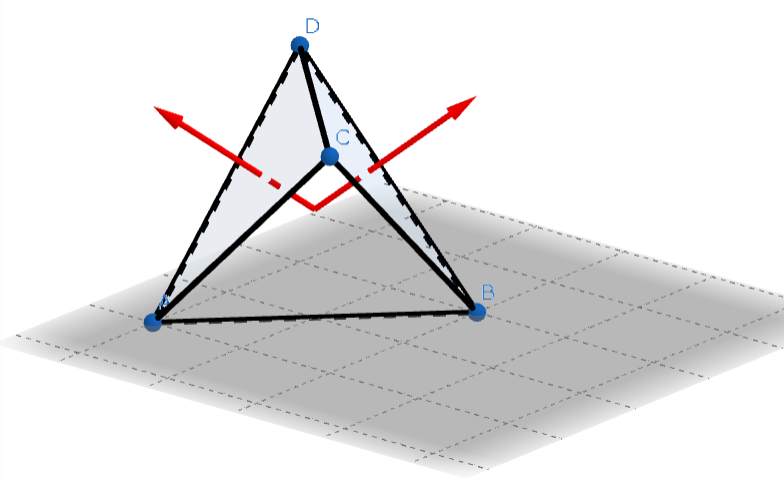
The angle between the two vectors - about 109.47° - is the supplementary angle of the angle between the two faces. Thus, the dihedral angle of the Tet is about 70.53°.
A clever way to find the dihedral angle of a regular is to utilize two things:
Let's think about a Tet which has 4 vertices at \(A(1,1,1), B(-1,-1,1), C(-1,1,-1), D(1,-1,-1)\). The center is \(O(0, 0, 0)\). Since the Tet is self-dual, we don't have to take its dual. Just choose two adjacent vertices, such as \(A\) and \(B\). Let \(\theta\) be the angle between \(OA = [1, 1, 1]\) and \(OB = [-1, -1, 1]\). Find \(\theta\) using the inner product:
\(\cos \theta = \frac{OA \cdot OB}{|OA||OB|} = - \frac{1}{3}\)
\(\Rightarrow \theta = \arccos (-\frac{1}{3})\)
Thus, the dihedral angle of the Tet is its supplementary angle, \(\arccos\frac{1}{3}\).
Another way to find the center of a face is adding all vertices. It works as long as the face is regular. In the above example, the normal vector of face \(ABC\) is \(OA[1,1,1]+OB[-1,-1,1]+OC[-1,1,-1] = [-1,1,1].\)
The cube and Oct are duals.
The 8 vertices of a cube is represented below:
The 6 vertices of an Oct is represented below:
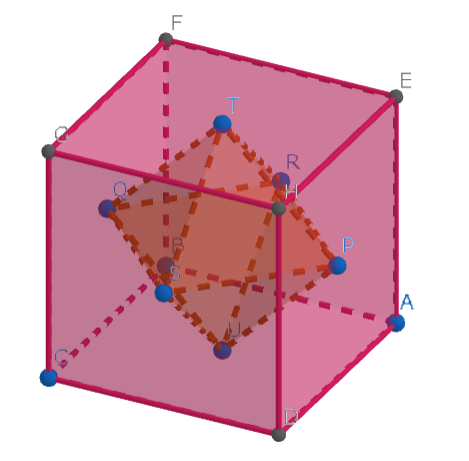
We can verify that the dihedral angle of the cube is 90° by taking its dual, the Oct. Any two adjacent vertices of the Oct forms the angle of 90°.
Similarly, we can find the dihedral angle of the Oct by thinking about its dual, the cube. It's the angle between two vectors, \([1, 1, 1]\) and \([1, 1, -1]\) for example. The answer is \(\arccos (-\frac{1}{3})\) - the supplementary angle of the Tet's dihedral angle.
The following diagram shows only two faces of an Oct.
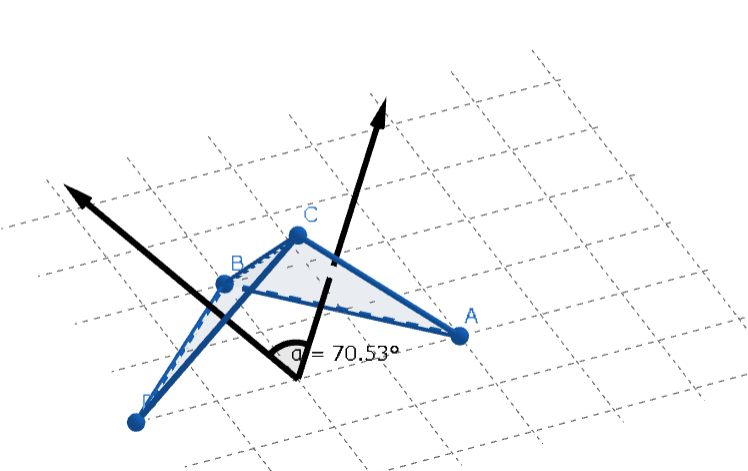
The Doe and Ike are duals.
The 20 vertices of a Doe is represented below:
Here, \(\tau\) is the golden ratio, \(\frac{1+\sqrt{5}}{2}.\)
In this case, the edge length is \(\frac{2}{\tau}.\)
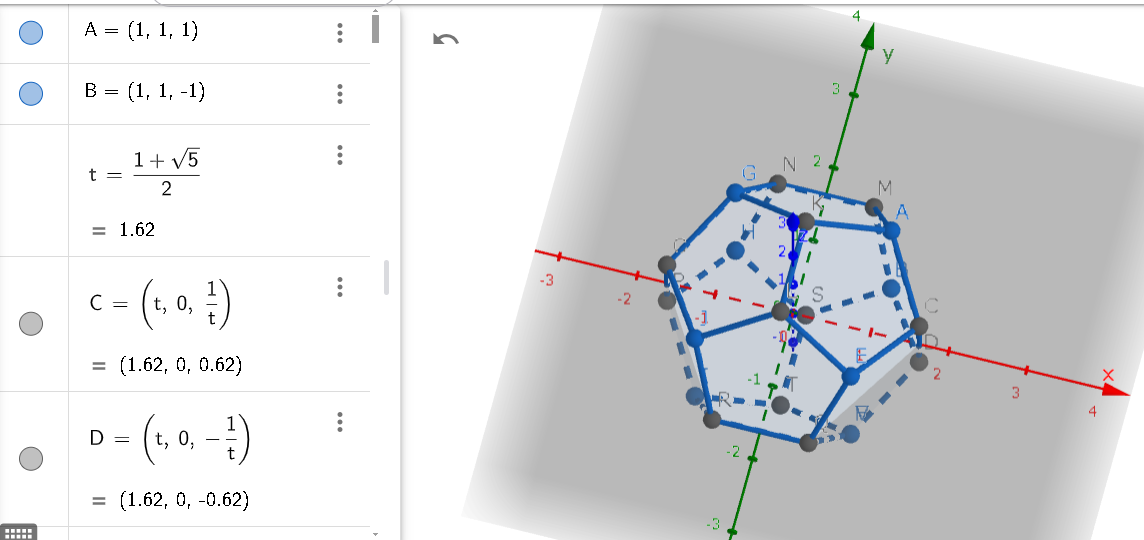
The 12 vertices of an Ike is represented below:
In this case, the edge length is 2.
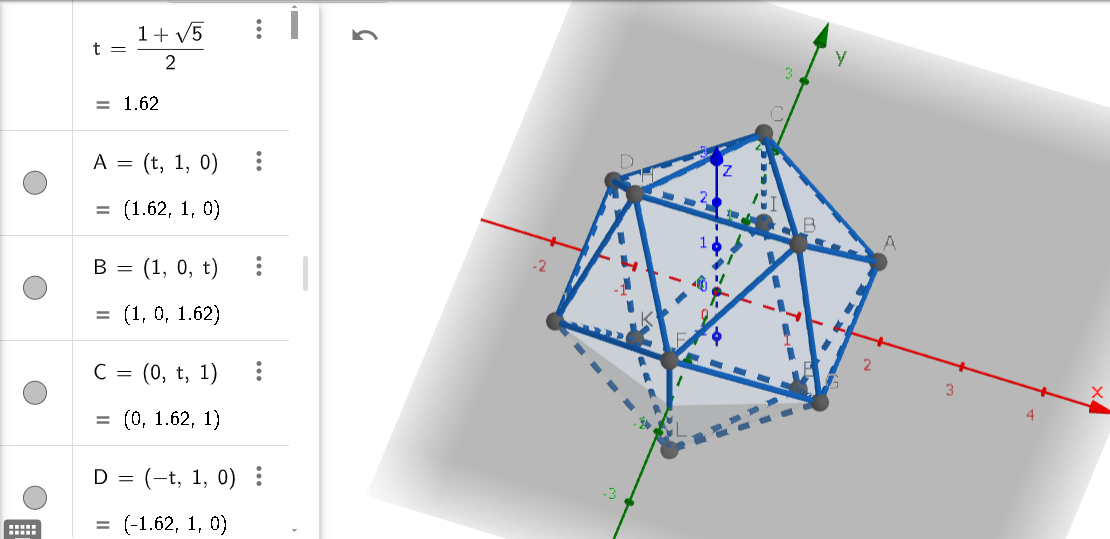
\(A(\tau,1,0)\) and \(B(\tau, -1, 0)\) are adjacent vertices of an Ike.
Let \(\theta\) be the angle between \(OA\) and \(OB.\)
\(\cos\theta = \frac{\tau^{2}-1}{\tau^{2}+1}=\frac{\tau}{\tau+2}=\frac{\sqrt{5}}{5}\)
Thus, the dihedral angle of a Doe is \(\arccos (-\frac{\sqrt{5}}{5}).\)
\(A(1,1,1)\) and \(B(\tau, 0, \tau^{-1})\) are adjacent vertices of a Doe.
Let \(\theta\) be the angle between \(OA\) and \(OB\).
\(\cos\theta = \frac{2\tau-1}{3}=\frac{\sqrt{5}}{3}\)
Thus, the dihedral angle of an Ike is \(\arccos (-\frac{\sqrt{5}}{3}).\)